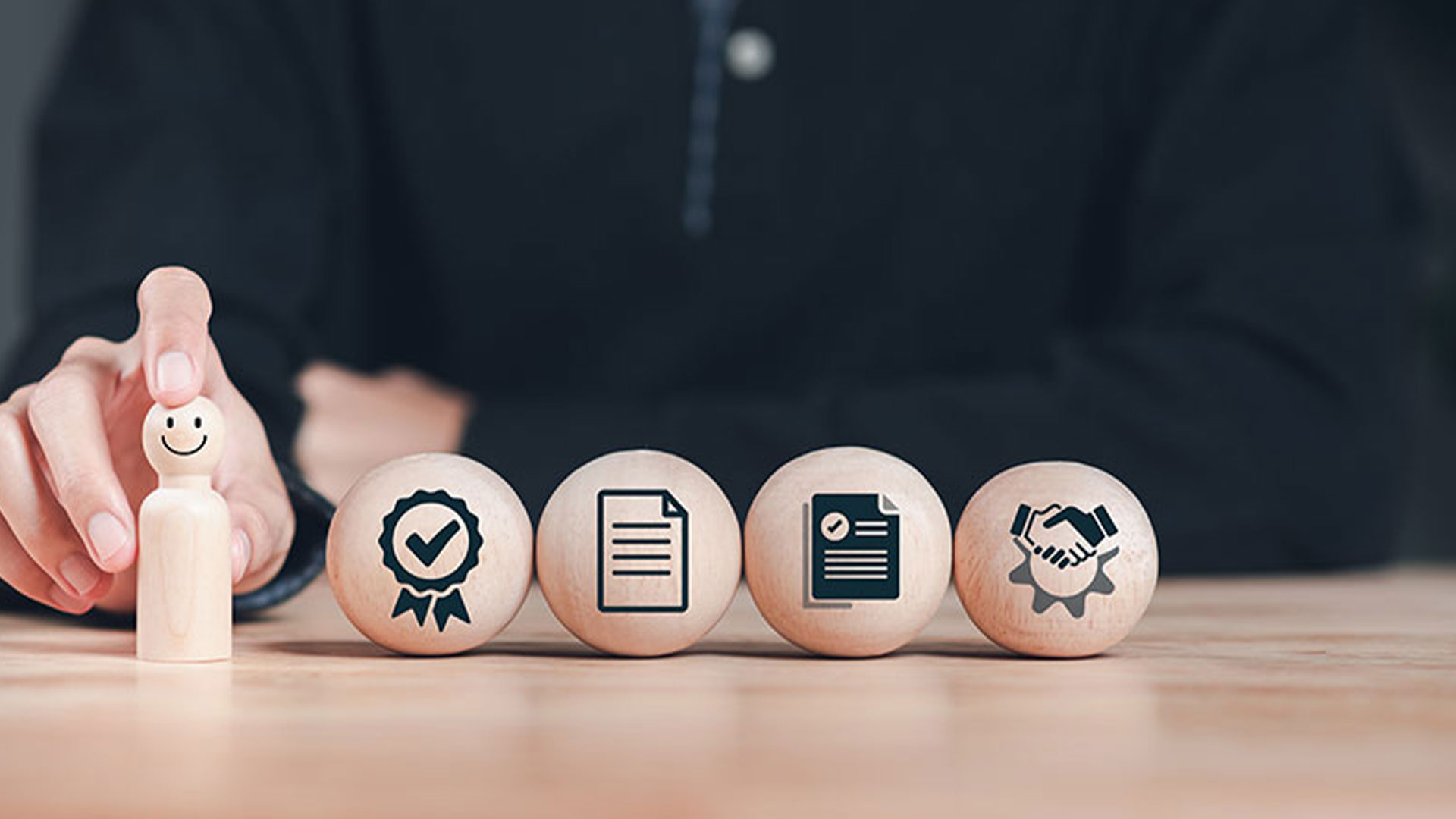What is Mobile Recruiting? 5 Top Strategies for 2024


In talent acquisition, mobile recruiting stands out as a transformative approach that leverages mobile devices to streamline and enhance the hiring process. Simply put, mobile recruiting involves the use of smartphones, tablets, and other mobile technologies to engage, attract, and evaluate potential candidates for job opportunities.
As we step into 2024, the importance of mobile recruiting has never been more pronounced. With the majority of the global workforce being digitally connected through mobile devices, organizations must adapt their recruiting strategies to meet the expectations of tech-savvy candidates. Mobile recruiting not only aligns with the preferences of today's job seekers but also reflects a commitment to innovation and efficiency in talent acquisition.
Understanding and embracing mobile recruiting is paramount for organizations aiming to stay competitive in the talent market. This approach not only widens the reach of job postings but also ensures that the application process is accessible and user-friendly, leading to increased candidate engagement.
In this blog, we will delve into the current landscape of mobile recruiting, explore its benefits, address potential challenges, and provide five top strategies for organizations to adopt in 2024. By doing so, organizations can position themselves at the forefront of recruiting trends, attracting top-tier talent in an increasingly mobile-centric world. Dive in below to learn more.
Key Benefits of Mobile Recruiting
Accessibility and Convenience
In the dynamic world of recruitment, accessibility is key. Mobile recruiting brings job opportunities directly to the fingertips of potential candidates, eliminating barriers that may exist with traditional application methods. With the prevalence of smartphones, candidates can browse job listings, submit applications, and engage with recruiters from virtually anywhere. This level of accessibility not only broadens the talent pool but also caters to the modern job seeker's desire for flexibility and convenience.
Increased Candidate Engagement
Mobile recruiting goes beyond mere accessibility; it fosters increased engagement throughout the hiring process. Candidates can receive real-time updates on their application status, participate in mobile-friendly assessments, and communicate with recruiters through instant messaging. The interactive nature of mobile recruiting ensures that candidates remain actively involved, resulting in a more positive and dynamic candidate experience. This engagement is crucial for building a positive employer brand and attracting top talent who seek organizations that value seamless communication.
Faster and More Efficient Hiring Processes
Time is of the essence in the competitive job market, and mobile recruiting excels in expediting hiring processes. Mobile-optimized application procedures reduce the time it takes for candidates to apply, and automated features such as AI-driven resume screening further accelerate initial candidate evaluations. The result is a more efficient recruitment pipeline that minimizes delays, allowing organizations to secure top talent before competitors do. In the fast-paced world of recruitment, speed is a significant advantage, and mobile recruiting provides the tools to stay ahead in the race for talent.
Also read our latest blog: Recruiting Strategies to Hire Top Talent in 2024
Top Mobile Recruiting Strategies for 2024
- Mobile-Optimized Application Processes
Importance of User-Friendly Application Interfaces
As mobile devices become the primary gateway to the internet for many individuals, it is imperative for organizations to design user-friendly interfaces for their application processes. Cumbersome and complex application forms can discourage potential candidates from completing the application. Hence, optimizing application processes for mobile devices involves creating intuitive interfaces, minimizing the number of steps, and ensuring seamless navigation. By prioritizing user experience, organizations can enhance the likelihood of attracting and retaining top talent through mobile channels.
Streamlining Application Steps for Mobile Users
Recognizing the limited screen real estate and attention span of mobile users, streamlining application steps is essential. This involves condensing the application form, focusing on essential information, and incorporating features such as autofill options to expedite the process. The goal is to make the application experience as efficient as possible, encouraging more candidates to complete the application and increasing the overall conversion rate.
- Leveraging Social Media for Recruiting
Utilizing Social Media Platforms for Job Postings
In 2024, social media remains a powerful tool for reaching a vast audience of potential candidates. Organizations should strategically utilize platforms like LinkedIn, Twitter, and even emerging platforms popular among the target demographic. Posting engaging and shareable job listings on these platforms increases visibility and leverages social media's viral nature, allowing opportunities to reach a broader and more diverse talent pool.
Engaging with Potential Candidates on Social Networks
Beyond job postings, active engagement on social media is crucial for building a strong employer brand. Responding to comments, sharing behind-the-scenes glimpses of the company culture, and participating in industry conversations contribute to a positive online presence. Social media interactions not only attract passive candidates but also provide a platform for organizations to showcase their values and personalities, creating a more compelling narrative for potential hires.
- Implementing AI and Chatbots in Recruitment
Enhancing User Experience with AI-driven Chatbots
Artificial Intelligence (AI) and chatbots have become integral to improving the mobile recruitment experience. Implementing AI-driven chatbots on career websites or within mobile applications allows organizations to provide instant responses to candidate queries, guide them through the application process, and collect essential information efficiently. This not only enhances user experience but also showcases the organization's commitment to innovation.
Using AI for Initial Candidate Screening
AI can be harnessed to automate the initial stages of candidate screening. By analyzing resumes and applications against predefined criteria, AI systems can shortlist candidates who match the required qualifications. This significantly reduces the time and effort spent on manual screening, allowing recruiters to focus on more nuanced aspects of candidate evaluation and engagement.
- Mobile-Friendly Employer Branding
Creating Compelling Mobile Content
A significant aspect of mobile recruiting in 2024 is the creation of mobile-friendly content that effectively communicates the employer brand. This includes mobile-optimized career websites, visually appealing job listings, and engaging multimedia content, such as videos that provide insights into the company culture. Mobile-friendly content not only captures the attention of potential candidates but also ensures a positive and memorable impression.
Showcasing Company Culture through Mobile Channels
In the competitive talent market, candidates are increasingly prioritizing a company's culture and values. Mobile recruiting strategies should, therefore, focus on showcasing these elements through mobile channels. This could involve sharing employee testimonials, featuring "a day in the life" stories through short videos, or using interactive features like polls and quizzes to highlight cultural aspects. By leveraging mobile platforms for storytelling, organizations can build an authentic and appealing employer brand.
- Data-Driven Decision Making in Mobile Recruiting
Utilizing Analytics to Optimize Mobile Recruitment Efforts
Data-driven decision-making is critical for refining and optimizing mobile recruiting strategies. Implementing analytics tools allows organizations to track the performance of mobile campaigns, analyze user behavior on mobile platforms, and measure the effectiveness of different recruitment channels. By understanding the data, organizations can identify areas for improvement, allocate resources strategically, and make informed decisions to enhance the overall impact of their mobile recruiting efforts.
Adapting Strategies Based on Data Insights
Beyond tracking performance, organizations should actively use data insights to adapt and evolve their mobile recruiting strategies. Organizations can allocate more resources to those areas if certain channels or approaches yield better results. Similarly, if data indicates areas of friction in the application process or candidate engagement, adjustments can be made to address these issues promptly. The iterative nature of data-driven decision-making ensures that mobile recruiting strategies remain dynamic and responsive to the evolving needs of both candidates and the organization.
Conclusion
In the fast-paced realm of talent acquisition, mobile recruiting emerges as the linchpin for success in 2024. Its pivotal role in enhancing accessibility, engagement, and efficiency underscores its strategic importance for organizations seeking top-tier talent.
As you embark on this transformative journey, consider the instrumental support of Exela’s HR Solutions. Our suite of services is tailored to elevate your recruiting strategies, ensuring they align seamlessly with the mobile-centric landscape. With user-friendly interfaces, social media prowess, AI integration, and data-driven insights, Exela’s HR Solutions empowers your organization to not only keep pace with industry trends but also lead the way in hiring the best talent. Partner with us, and let's redefine your recruitment success together.
DISCLAIMER: The information on this site is for general information purposes only and is not intended to serve as legal advice. Laws governing the subject matter may change quickly, and Exela cannot guarantee that all the information on this site is current or correct. Should you have specific legal questions about any of the information on this site, you should consult with a licensed attorney in your area.








